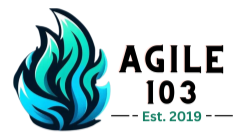Leading Change with Flexibility, Clarity, and Human-Centered Adaptation
Change is inevitable, but successful change is intentional. In Agile environments, organizations are constantly evolving, adapting, and responding to new information. Yet, change remains one of the most challenging aspects for teams and leaders to manage. Our upcoming session, Agile Change Management, explores how to navigate change using flexible, iterative, and people-centered approaches that reduce resistance and increase adoption.
This event is ideal for Scrum Masters, Agile Coaches, Product Owners, Team Leads, and business stakeholders who want to drive meaningful transformation without overwhelming their teams.
Why Change Management Must Evolve with Agile
Traditional change management models often rely on heavy documentation, lengthy approval cycles, and top-down directives. While these methods worked in slower, more predictable environments, today’s organizations move too quickly for rigid processes.
Agile Change Management, in contrast, focuses on:
-
Incremental change instead of big-bang rollouts
-
Continuous communication and transparency
-
Empowered teams rather than command-and-control governance
-
Frequent feedback cycles to evaluate impact and adjust
According to Prosci’s insights on change success, the highest-performing organizations integrate change management directly into Agile delivery processes.
The Harvard Business School online publication also highlights how modern leaders must embrace adaptability and decentralized decision-making.
Core Principles of Agile Change Management
1. Co-Creation and Shared Ownership
People resist change they feel imposed upon them, but they support what they help build.
In Agile change initiatives, everyone is involved early, shaping solutions and raising concerns before decisions are finalized.
2. Iterative Change Delivery
Instead of rolling out massive transformation plans, Agile breaks change into smaller steps.
This approach enables teams to test ideas, gather feedback, and pivot quickly.
The Lean Change Management community offers guidance on iterative change cycles.
3. Continuous Feedback and Adaptation
Retrospectives, pulse surveys, and feedback loops help leaders identify obstacles early and maintain alignment with organizational goals.
Spotify’s engineering culture emphasizes this adaptive style of change.
4. Change Guided by Data
Agile leaders rely on measurable indicators, not assumptions.
This includes sentiment metrics, capacity impact, delivery throughput, and adoption patterns.
Practical Techniques for Leading Change in Agile Organizations
Frequent Micro-Communication
Short, frequent updates keep teams informed without overwhelming them. Think Slack messages, brief team check-ins, or visual boards instead of lengthy emails.
Change Canvases
Tools like the Lean Change Canvas help organize goals, risks, benefits, and stakeholder needs in a single view.
Pilot Groups
Start with a small test group before a larger rollout.
This reduces risk and improves the final approach.
Psychological Safety as a Foundation
People adapt better when they feel safe raising concerns, questioning decisions, and proposing ideas.
Google’s re:Work study highlights why this matters.
Common Challenges Agile Leaders Face and How to Address Them
| Challenge | Agile Solution |
|---|---|
| Teams feel overwhelmed by too much change | Introduce fewer changes at a time, spread iterations out |
| Leaders push timelines faster than teams can adapt | Use capacity-based planning for change initiatives |
| Stakeholders resist new ways of working | Emphasize co-creation and involve them in planning |
| Communication gets lost in busy schedules | Use multiple channels and repeat critical messages |
Agile Change Management isn’t about changing faster, it’s about changing smarter and with empathy.
What You Will Gain from This Session
Participants will learn to:
- Design and implement iterative change plans
- Facilitate organizational shifts using Agile tools
- Overcome resistance with empathy and transparency
- Strengthen communication and alignment across teams
- Apply common change frameworks in an Agile-friendly way
You’ll walk away with practical methods you can apply immediately in your teams and organizations.
Whether you’re supporting a new tool rollout, team restructuring, or organizational transformation, Agile Change Management gives you the roadmap to lead with clarity, empathy, and confidence.
Join our session to learn how to manage change in a way that sticks, scales, and supports long-term success.
Register today!
And become a more resilient, adaptive leader.
